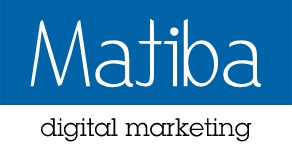
Sometimes businesses use a flat rate, or a predetermined rate, to charge for overhead. Process Costing calculates costs at a particular stage of production whereas job cost accounts for each completed work order. Let’s take a look at how you might break down your job costing calculations in a very simple/basic way. It is best suited for industries where products are made per customers’ demands. Examples of these industries are – Furniture, Interior Decoration, and Shipbuilding. The diagram also shows the departments that report to the production unit director and gives an indication as to the flow of goods through production.
Best Software Testing Companies in India
When it comes to job costing and process costing, it’s not about which is the best. Instead, it is about the one that suits your construction company better. The most important thing is tracking your product costs accurately with either one. While you can do so manually, it’s best to have a solution you can trust. When using a system of process costing, companies determine the final cost of manufacturing a product by tracking how much it costs at each step of the production process. After, they then divide that cost by how many products the process produced.
Download a free copy of “Preparing Your AP Department For The Future”, to learn:
Instead, it looks at direct costs, those that are directly incurred in production, and indirect costs, those that aren’t directly involved, but still need to be considered, such as facility rent. One factor that can complicate the choice between job order costing and process costing is the growth of automation in the production process, which typically is accompanied by a reduction in direct labor. The cost of the increase in equipment (typically reflected as a depreciation expense) is allocated to overhead, while the decreased need for labor usually reduces the direct labor cost.
- When products are custom ordered, knowing the cost of the materials, labor, and overhead is critical to determining the sales price.
- This is the case for plumbers, mechanics, freelancers, movers, and anyone who works in a trade or provides customers an estimate before doing any work.
- Sales have been great, but they are now in a position to really get down to ensure that they are making money on each planner they sell.
- Someone would have to closely examine the checks to see any discrepancies, and that seemed unlikely.” The multimillion dollar fraud was exposed when another accountant looked closely at the checks and noticed discrepancies.
Accounting Jobs of the Future: How Staffing Agencies Can Help Land Them
To make the most of your costing system, create an annual budget and cost for both direct and overhead costs. Though the overhead allocation process is the same, the types of overhead costs differ from one company to the next. After Hannah determines her overhead costs and decides on activity level she allocates those costs for each unit. Just as shown with job costing, Hannah has to create a budget with assumptions about costs.

Overhead is applied to each product based on an activity base, which will be explained in Compute a Predetermined Overhead Rate and Apply Overhead to Production. Raw materials are stored in the materials storeroom and delivered to the appropriate production department—cutting, painting, or assembly/finishing. The design department uses direct labor to create the design specifications, and, when completed, it sends them to the production department. The production department uses the material and design specifications and adds additional labor to create the sign. The sign is transferred to the finishing department for final materials and labor, before the sign is installed or delivered to the customer.
Hybrid Systems
When dealing with near identical products and services, process costing is the ideal cost accounting method. It’s especially effective for the large-scale production of homogenous products. In summary, apply job order costing for low-volume, customized production when traceability is needed. negligence vs tax fraud Use process costing for mass production with homogeneous output to reduce cost. Job order and process costing are two main product costing methods used in manufacturing accounting. Determining which approach to apply depends on the production environment and product characteristics.
For made-to-order companies, job order costing prevents under- or over-pricing. In process manufacturing, scaling process costing minimizes accounting costs. The difference between process costing and job order costing relates to how the costs are assigned to the products.
This is because other variances will arise during the project and can only be accounted for at that time. For example, they may find that the entire plumbing system for one house is damaged. In addition to specific price and cost, these are other important considerations. Process costing can also accommodate increasingly complex business scenarios. While making drumsticks may sound simple, an immense amount of technology is involved. Rock City Percussion makes \(8,000\) hickory sticks per day, four days each week.
Whereas process costing is the total cost of the processes carried out in the entire project. Many businesses produce largequantities of a single product or similar products. Process costing averages costs across a high volume of homogeneous units and is suited to continuous mass production.
Depending on what industry you are in and how you are operating, you will likely find one or the other to be a more suitable option for all of your costing purposes. Unless you offer a variety of both customised and standardized products, you are unlikely to need to use both types of costing processes. Material and labor costs that cannot be traced directly to the product produced are included in the overhead costs that are allocated in the production costing process. Overhead is applied to each product based on an activity base, which will be explained later in this chapter.
In addition to setting the sales price, managers need to know the cost of their products in order to determine the value of inventory, plan production, determine labor needs, and make long- and short-term plans. They also need to know the costs to determine when a new product should be added or an old product removed from production. To implement her process costing system, she computes the cost per specific unit produced. Each type of product produced will have a slightly different cost total.





